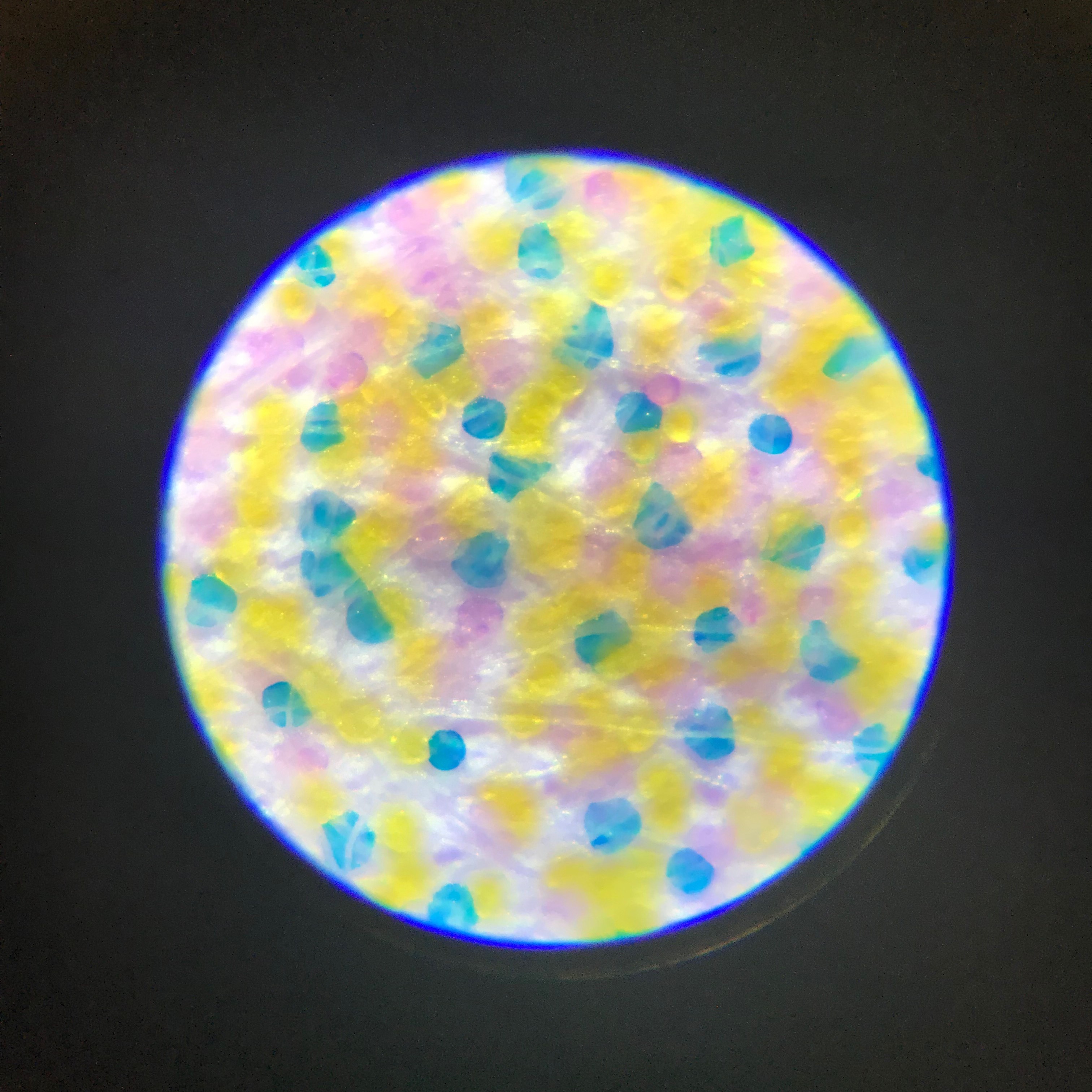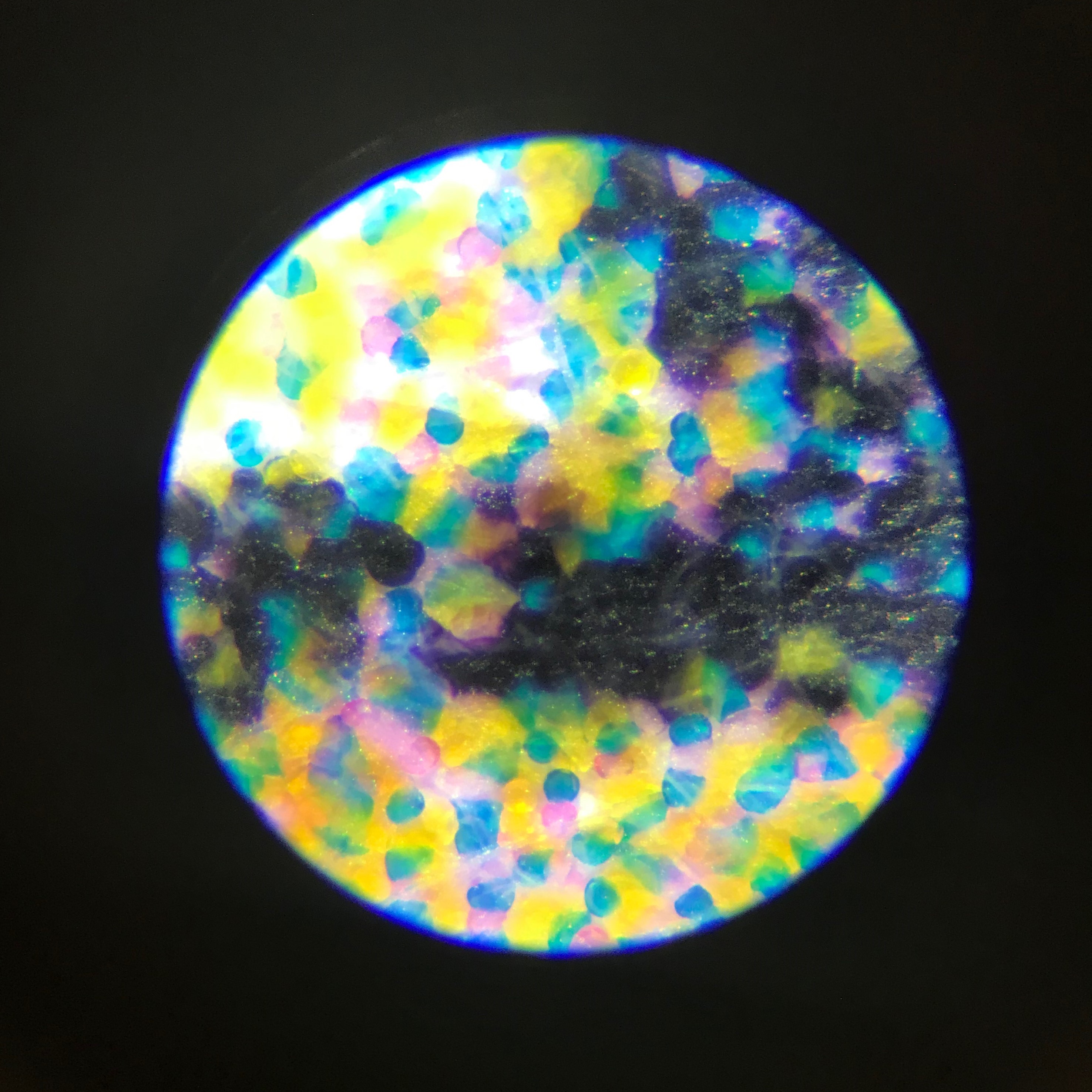In this new segment, I.D. This!, we’ll be taking a look at a digital print that’s exhibiting some odd properties. By taking the time to identify the materials that comprise the print, we'll be able to better preserve it by choosing appropriate housing materials, handling protocols, and long-term storage conditions. The prints we'll be looking at are from a newly accessioned collection from our Smithsonian Institution Traveling Exhibition Service (SITES) and document the exhibition “Beyond Baseball: The Life of Roberto Clemente,” which traveled from 2007 to 2012.

What is the base substrate material?
The base substrate, or the material that holds the media of an object, appears to be your common computer printer paper. It’s of average thickness (about 20 lb.) and white in color.
What is the media?
This object can be considered "printed;" in that, media has been applied to the surface of the paper in a printed manner, such as from a computer printer. Under magnification, we can see a distinct pattern of dots that indicate this in an inkjet print.
This type of pattern is distinctive of FM screening, or frequency modulation, and is based on a mostly random distribution of halftone dots. The dots themselves never change size, just the frequency of the distribution. As for pigment vs. dye identification, this can be tricky. This print is actually dye, but the appearance is almost pigment-like due to the sharp edges of the dots. However, the dots themselves appear mostly translucent with no graininess. This distinctive appearance is due to the fact that this object was printed on a solid ink inkjet printer, which can also be known as a phase-change inkjet.
What is it called?
How we apply nomenclature is dependent on our purpose. Curators identify things differently than conservators, registrars, and education staff do. Here are some examples of how one staff member may define this object versus another staff member.
- Conservation: Dye phase-change inkjet print on uncoated bond paper
- Collection Management: Inkjet print
- Exhibition: Digital dye inkjet print on paper
How should it be stored and handled?
The dye media means that this inkjet print will be very sensitive to water. While the wax may provide some stability to moisture, it would still be at risk in a water emergency. The wax also makes this print very sensitive to high temperature environments. Have you ever put a crayon outside on a summer day? You probably witnessed it melting into an impossible-to-clean-up mess. This also helps us to explain why our print is exhibiting some weird qualities.
From the front, the print looks fairly stable. The color quality is average, with some minor fading. However, once you flip the page over, you can clearly see that something has gone awry; there is a mirror image of the front in mostly magenta hues. We can assume that this collection was, at some point, stored in a warm and possible damp environment that caused the wax to melt and the dye to bleed.

As for storage and handling, this type of print should ideally be stored in frozen conditions (<32°F) with relative humidity levels between 30-55%. Gloves, preferably nitrile, should be worn when handling inkjet prints to reduce the transfer of oils from hands. You will also want to take to avoid touching the image area to reduce the risk of surface abrasions.
Related Resources
- The Atlas of Water Damage on Inkjet-Printed Fine Art, By Megan Connor and Daniel Burge, The Image Permanence Institute
- "Preserve It While You Use It: Collections Care in Action," by William Bennett, The Bigger Picture, Smithsonian Institution Archives
- The DP3 Project: Digital Print Preservation Portal, The Image Permanence Institute
Produced by the Smithsonian Institution Archives. For copyright questions, please see the Terms of Use.



Leave a Comment